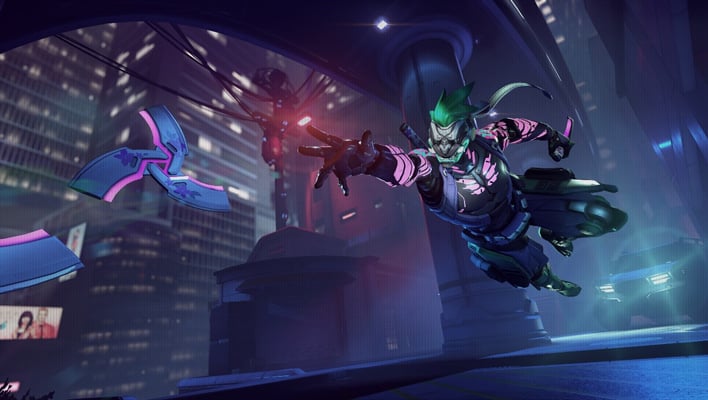NVIDIA's GeForce RTX 4090 Is So Fast Blizzard Bumped Overwatch 2's Framerate Cap To 600 FPS

NVIDIA posted a video of the RTX 4090 powering Overwatch 2 to its GeForce channel on YouTube. In the demonstration, we see the game generally running above 400 FPS with occasional spikes exceeding 500 FPS. Oh—and we should mention this is all with a resolution of 1440p, which has about 78% more pixels to push than 1080p. The game is running at high settings with no mention of DLSS.
As a competitive first-person action shooter, framerates matter significantly more in Overwatch 2 than in more scenic titles like Cyberpunk 2077. Higher framerates allow players to react more quickly to changes on the battlefield. If you can spot your opponent even a few milliseconds sooner than they see you, it can give you the edge in a duel or else give you an extra precious moment to escape a bad situation.
Research has shown than even though there are diminishing returns to the benefits afforded by higher framerates, there really is not an upper limit. High end gaming monitors currently top out around 360 Hz, but framerates should run even higher to enhance performance. Ideally, games should run around at least double the monitor’s refresh rate to guarantee each cycle has a fresh frame to display and minimize stuttering.

The gameplay footage does not just show framerates either. NVIDIA helpfully includes latency metrics which are every bit as important in a fast-paced game. NVIDIA Reflex helps keeps latencies below 10ms. In fact, the majority of measurements shown during the demo hover in the 5.0-7.5 millisecond range. Only one particularly hectic sequence near the start pushes latencies as high as 9.6ms while framerates dip to around 366 FPS.
All told, this opens to door to higher resolutions for competitive gamers who have long felt bound to 1080p panels. Faster framerates are always welcome, but the advantage of higher resolution displays is slightly less clear, though. Apart from looking better, the extra resolution does make distinguishing targets at a distance slightly easier. On the flip side, players must scan their crosshairs across more pixels to reach their target. Depending on how a game implements aim mechanics, this could make scoring a headshot more or less difficult. We tend to think an immersive experience helps more than it hinders, though.

